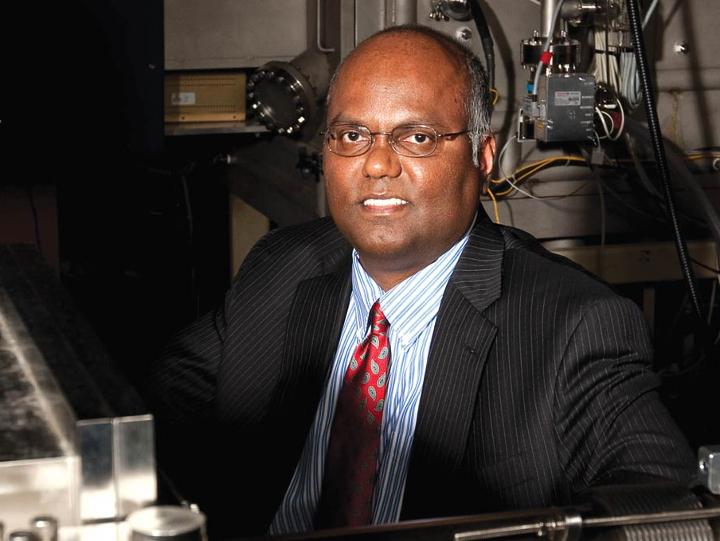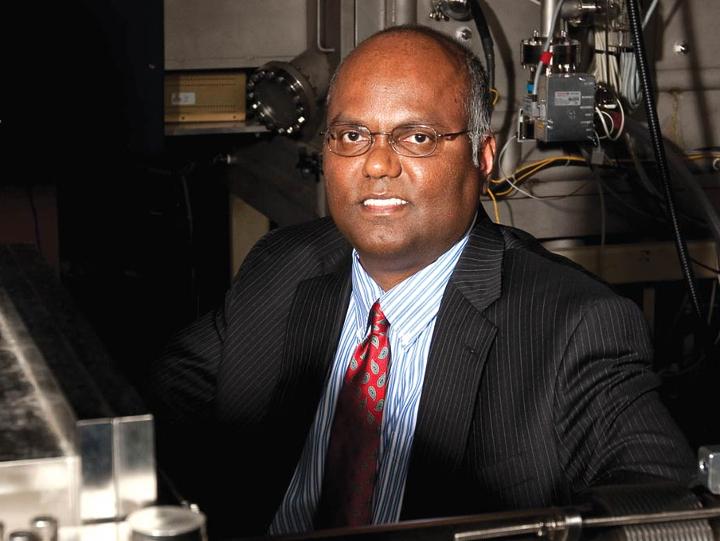
Credit: University of Houston Cullen College of Engineering
With their potential for big savings through increased energy efficiency and reduced greenhouse gas emissions, interest in improving the manufacturing of superconductor wire is at an all-time high.
The U.S. Department of Energy Monday announced a $4.5 million grant to Venkat Selvamanickam, MD Anderson Chair Professor of Mechanical Engineering at the University of Houston, to boost the advanced manufacturing of high-performance superconductor wires for next generation electric machines.
The award is one of 13 projects funded to advance technologies for energy efficient electric motors through applied research and development.
"Advancing these enabling technologies has the potential to boost the competitiveness of American manufacturers and take the development of more efficient electric machines a giant step further," Mark Johnson, director of DOE's Office of Energy Efficiency and Renewable Energy, said of the nearly $25 million in grant awards. "These technology R&D projects aim to significantly improve industrial motors for manufacturing, helping companies who use these motors in manufacturing save energy and money over the long run."
Selvamanickam is one of the world's leading experts on manufacturing superconductors. He is the co-founder of SuperPower, which produces superconducting electrical wire, and has continued his research since joining the UH faculty in 2008. He also is director of the Advanced Research Hub at the Texas Center for Superconductivity at UH and manages the Advanced Manufacturing Institute at UH.
"Superconducting motors and generators made with the wire that will be manufactured using the technology developed in this program can lead to more than six billion kilowatt hours of annual electricity savings and reduce CO2 emissions by nearly a million tons per year," he said.
Superconductor devices are used in energy, health care and transportation, among other uses, and offer advantages including saving as much as 2 percent in electricity use in electric motors and generators and up to 10 percent in transmission and distribution equipment. That's because superconductors can transport electricity with little or no resistance, meaning energy isn't wasted in the electric machines and during transmission.
"Dr. Selvamanickam is recognized globally for his focus on the development of innovative manufacturing technologies for thin film superconductor wire, which has been supported by the federal government, as well as the state of Texas and private industry," said Ramanan Krishnamoorti, interim vice president for research and technology transfer at UH. "This grant will allow him to continue his work to overcome obstacles to more efficiently manufacture the wire."
The funding is part of the Obama Administration's Mission Innovation, an effort to double clean energy research and development investments over the next five years. The Energy Department last spring announced plans to fund up to $25 million in projects through the Next Generation of Electric Machines: Enabling Technologies funding opportunity, targeting technologies to boost efficiency in a cost-effective way.
Selvamanickam said the funding will enable the use of superconducting machines at liquid nitrogen temperatures, which can lead to a widespread commercialization of this technology. Until now, superconducting machines, including motors and generators, have been built for use at lower temperatures because of performance limitations in the superconducting wire. The DOE-funded program will enable overcoming those limitations.
His team was the first to manufacture thin film superconductor wire, which was used in 2008 to power 25,000 households in Albany, N.Y., and now is used by more than 200 institutions around the world for applications including wind generators, energy storage, power transmission cables, magnetically levitated trains, medical imaging and defense applications.
###
Media Contact
Jeannie Kever
[email protected]
713-743-0778
@UH_News
http://www.uh.edu/news-events
############
Story Source: Materials provided by Scienmag





